




Bringing a new cat into your home and introducing it to your resident cat/s can be quite nerve racking.
You want them all to get on together and welcome the new addition into the house, but this seldom happens quite so easily even though your reason for getting another cat may be to keep your resident cat company.
Careful introductions can help to smooth the way towards a harmonious merging of animals.

Controlling the situation rather than leaving the animals to sort it out for themselves will give a much better chance of a smooth meeting and the best possible start together.
Surprisingly, it can be easier to introduce a cat to a dog than a cat to another cat/s.
This is because a cat won’t view a dog as competition for resources it might have to get used to its excited behaviour and learn to stand up to it to avoid being chased, but this usually happens very quickly and much more easily than we imagine.
If you already have cats that live together, or are thinking of getting two cats or more, there are some important things to consider about their social nature.
Cat behaviour can be very subtle and just because cats are not fighting or hissing at each other, does not necessarily mean that they are friends.
It can be helpful to watch them carefully to assess whether they get along.
Consider where their resources are placed, to ensure your cats are all happily cohabiting.
Domestic cats have an inherent desire to be solitary hunters and maintain a territory. However, they can live well together in circumstances when: they perceive each other to be in the same social group and, there are sufficient resources provided for them to avoid competition.
While some cats can form very strong social bonds, sometimes cats living in the same household do not perceive each other to be in the same social group, although under stress they will tolerate the presence of others especially for a particularly valued resource such as food, a fuss from the owner, or the sunniest spot in the house.

This is done very subtly so owners often do not notice and it can be very stressful for the affected cat sometimes even leading to behavioural problems.
Some cats will ‘block’ access to ‘resources’ such as food, water, stair cases, exits, or litter trays from other cats that they live with.
Example of a cat 'blocking' access to the stairs for the other cat
Example of a cat blocking access to food. They should have a bowl each!
You and your family members are also seen as a resource to a cat so some cats will block another cats access to you!
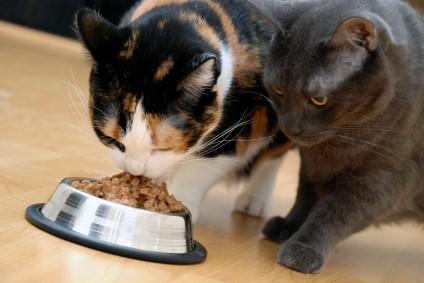
Some cats operate a more tolerant ‘time share’ system where one cat may use a particular area in the morning and the other cat will then use that area in the afternoon.
Sometimes other events may cause conflict, leading to house soiling problems. For example, a cat may start to urinate on a carpet away from the litter tray. There may not be anything wrong with the cat’s ability to use a litter tray, instead it may be that the tray is blocked at certain times by other cats in the household and the cat is unable to access the tray when it needs to.
Signs of aggression and conflict are not the only way to tell that cats are in different social groups.
The signs can be subtle, so you need to look for the positive signs of social interaction.
Cats are in the same social group if they sleep touching each other and spend time rubbing and grooming each other, sharing and reinforcing their common scent.
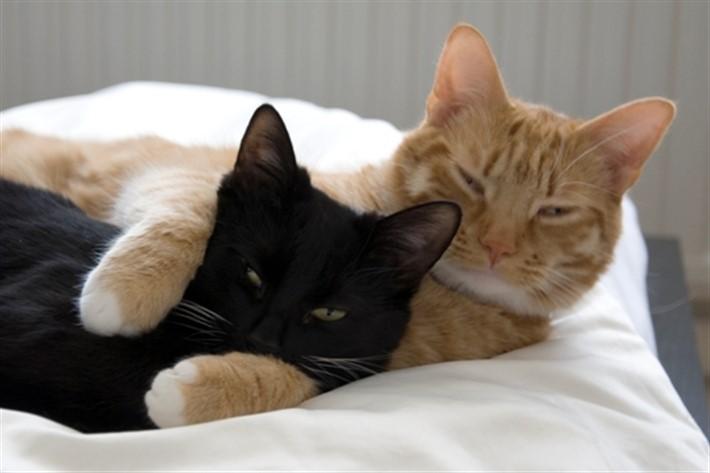
There is nothing more endearing that seeing two cats choosing to cuddle up with one another.
Sibling cats may not necessarily remain in the same social group and may drift apart as they approach social maturity, between 18 months and four years of age.
Don’t add cats to a stable social group.
Avoid extreme characters, e.g. extremely nervous or confident, when adding to an existing group. Keep the appropriate number of cats to suit the environment.
Avoid multiple cats in a household in densely cat-populated areas. Avoid feeding stray cats and encouraging them into your home and garden.
Water is an important resource to cats and several bowls throughout the home will potentially encourage them to drink more frequently and reduce the potential for access blocking.
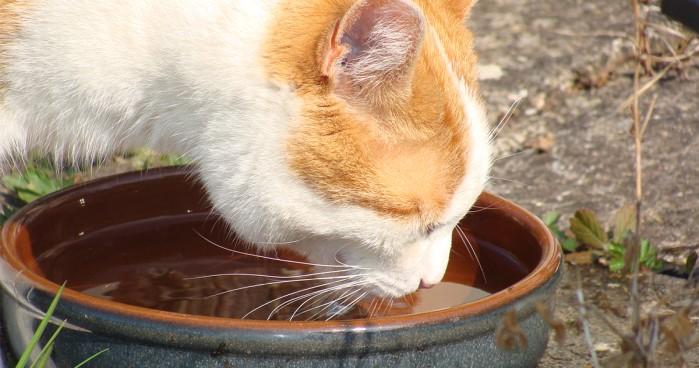
It is also a good idea to provide a few different drinking stations outside.
Provide dry food for ‘grazing’ throughout the day or divide wet food into several smaller meals to avoid competition at set mealtimes.
Designate several separate areas within the home as feeding stations to avoid bullying or blocking.
Provide different types of beds/ sleeping areas in different locations so cats can choose what they prefer away from each other.
Provide high resting places, beds and private areas in sufficient number.
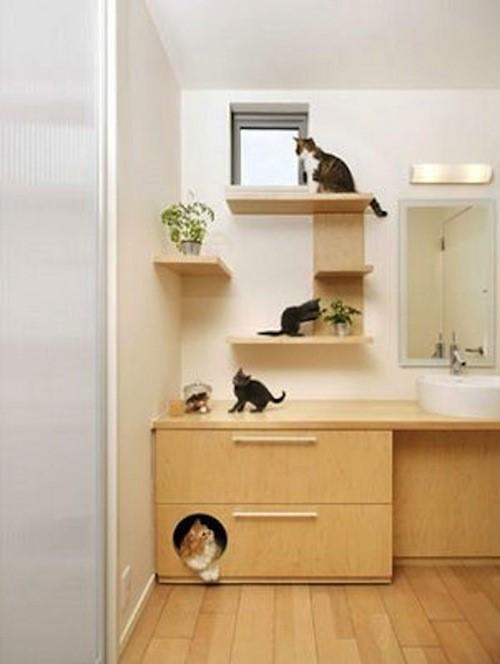
Provide a few different scratching posts and mats near entrances, beds and feeding stations to encourage a communal area where they can chose to come together.
Cats are very territorial and mark their territory in numerous ways by using the scent glands they have all over their bodies.
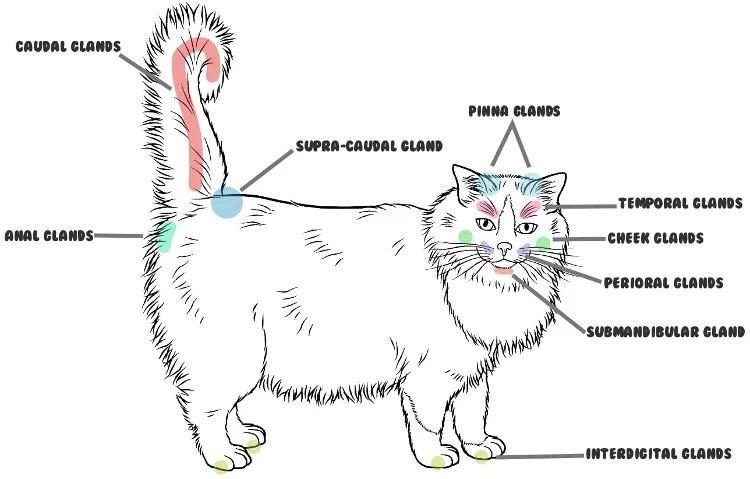
You will notice that cats create scent marks, which look like grease/dirty marks, in communal areas such as walls or furniture and you will see them all rubbing their cheeks over the same mark.
These marks should be left alone and not cleaned away.
Provide indoor litter trays, even if the cats have access outside.
Providing ‘one tray per cat plus one extra in different locations’ indoors is the appropriate formula for multicat households.
Provide two separate entry and exit points to the property, i.e. cat flaps, doors or windows, to avoid the risk of guarding or blocking to enable even the most timid cat to get indoors/ outdoors unhindered.
Provide all resources (food, water, litter trays, beds, toys, scratching posts, high perches and private places) in the formula ‘one per cat plus one extra’, positioned in different locations’ away from each other to limit competition.

If you already have one or more cats, think carefully before getting another cat as it is an important decision. There are many factors to consider.
1. Can you afford the extra daily costs, including veterinary care for which big bills can be unexpected?
2. Do you have enough space in your home to provide extra resources in the right locations to support another cat?
3. Do you have enough time for another cat?
4. Has your cat coped with the presence of other cats in the past? Cats are all unique and have different characters.
Although a cat might have lived with another cat in the past, this does not mean that they will necessarily tolerate a new cat immediately or even at all.
In general cats are solitary creatures and unless they have been brought up with a sibling they generally prefer to be the only cat in the household.
If a cat’s companion cat has recently died, hold off getting a new cat as a ‘friend’, at least until the remaining cat has had time to adjust.
In some cases, cats actually seem to blossom once they are on their own and prefer to remain as a single cat household. This can be difficult for us to understand, as humans are a more social species.
Thinking from a cat’s perspective takes a different approach.
Cats which have been in contact with unrelated and nonaggressive cats when they were kittens – less than seven weeks of age – sometimes cope better with the presence of other cats when they are adults.
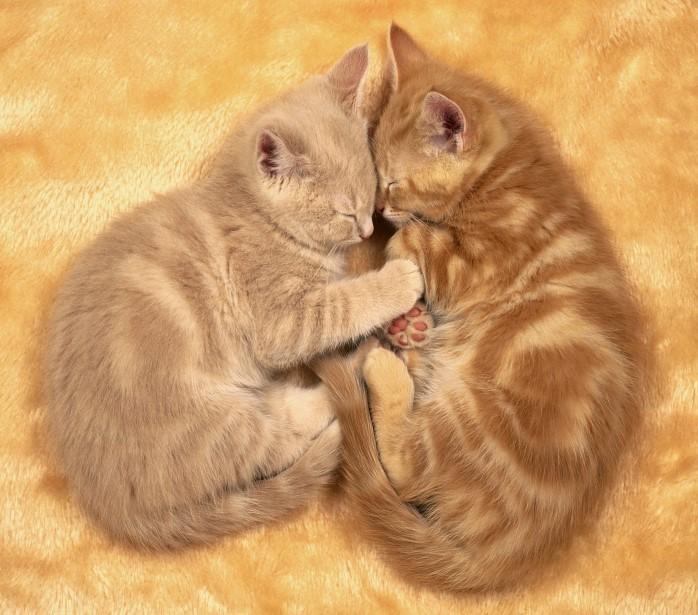
Kittens (under 6 months old) are less of a threat to a resident cat than an adult cat. This is because a kittens body language and movements are less threatening and they have yet to adopt the concept of territory and competing with others. If you are only getting one kitten, it is better to get a kitten of the opposite sex to the resident cat to minimise competition.
If your resident cat is mature it is better to get a pair of kittens, as a single kitten will constantly hassle the older cat to play.
This can then cause the older cat to become aggressive towards the kitten or you could find your adult cat will avoid coming inside your home.
Neutering helps to remove most behaviour problems, but may not eliminate them altogether. If you are getting an adult cat, again it can be better to bring in one of the opposite sex, as long as it is neutered to prevent more unwanted litters of kittens.

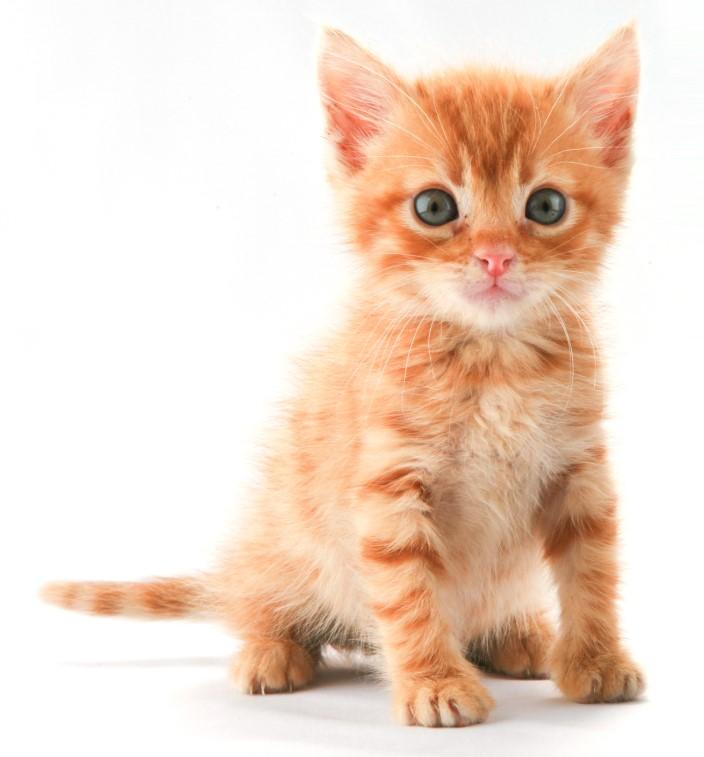
Choose a quiet time when the household is calm avoid festivities, parties, visiting relatives or friends and find time to concentrate on calm reassurance for both cats.
Unfamiliar cats should be introduced very slowly in the hope that they will ultimately perceive each other to be in the same social group, or at least peacefully cohabit. This can be helped by providing plentiful resources in a variety of different places in the home to avoid conflict and competition.
If cats are forced together too quickly, it may lead to lifelong conflict and stress, which is difficult to resolve first impressions are very important.
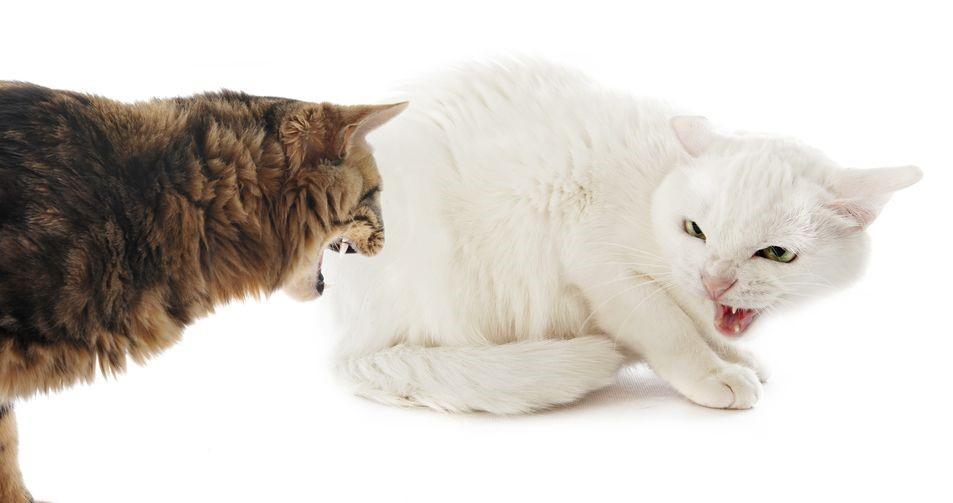
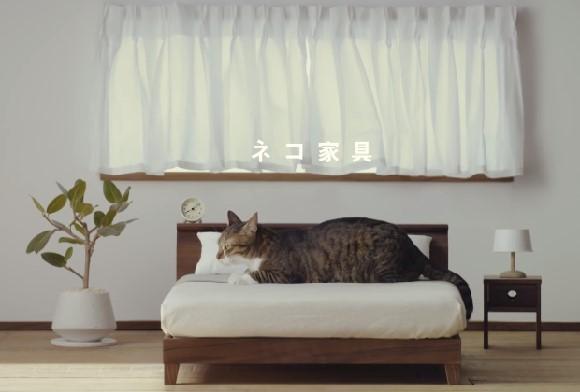
If you have an existing resident cat, ensure that all their routines remain the same where possible.
Confinement in a kitten pen or dog crate can be very distressing for a cat or kitten so this isn’t necessarily the best method of introduction and not recommended.
A better alternative is to confine the new cat in a room initially and introduce the resident cat to the newcomer gradually.
This room should be an area where your resident cat doesn’t spend much time.
Unfortunately, all too often, cats are introduced without sufficient time and resources to successfully integrate. The result can be two cats forced to cohabit in stressful living conditions.
Behavioural problems may result, or they may become withdrawn or intolerant of attention from owners.
Food and water, cats like to drink away from where they eat, so place the food and water bowls in separate areas sited away from the litter tray.
Somewhere to hide - It is very important for cats to have somewhere to hide e.g. a cardboard box on its side, or under the bed – particularly when adapting to a new environment.
A viewing platform. Cats love to view their surroundings from a height. You could offer access to high spots e.g. shelves or the top of a wardrobe or window sills. Ensure easy access by placing a stool nearby.
Somewhere to sleep igloo beds, cardboard box, blankets in elevated places.
Toys – be aware that a cat may not want to play while they are settling in.
A scratching post try placing this near to where the cat sleeps as they often like to stretch and scratch after they wake up.
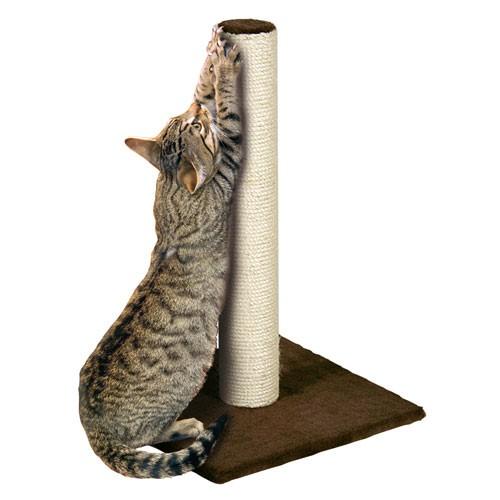
Litter tray placed away from food and water bowls.
You can install a facial pheromone diffuser, such as Feliway©, in the area that each cat uses to sleep, to make the environment more reassuring for the cats.
Keep the new cat in this room for 3-4 weeks to allow it to settle into its new surroundings more easily. Doing this will also give you the chance to introduce the scent of the existing cat to the new cat and vice versa before they come face to face.
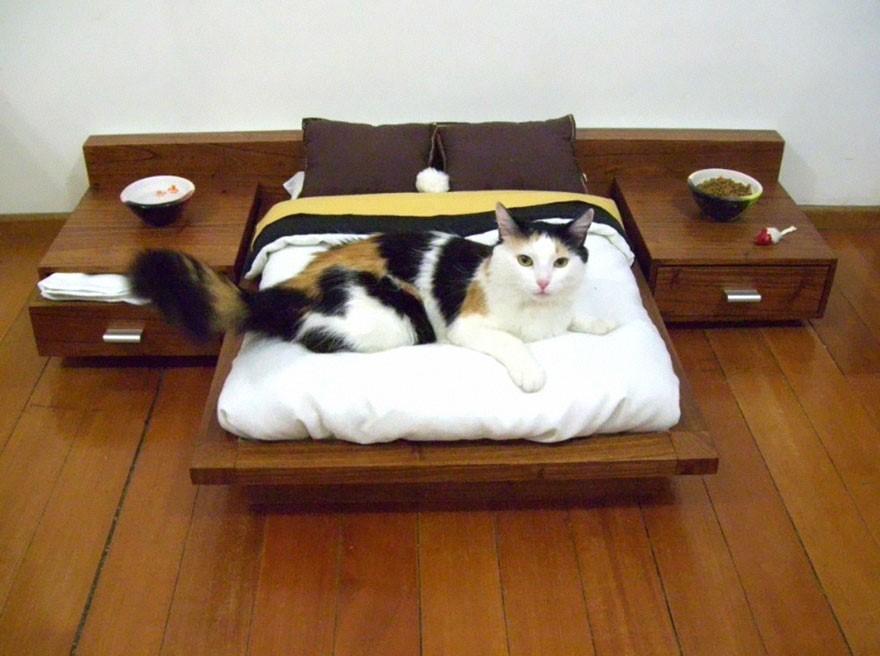
This is essential as scent is the most important aspect of group recognition in cats.
The new cat should be settled into the room with the following resources:
To do this you can start by swapping over the cats’ bedding and toys. Another way of creating this communal scent is by utilising the glands around the cats’ heads that secrete a pheromone that signals a positive message of security and familiarity.
Stroking both cats, one after the other, will also aid in the process of creating a communal, familiar smell. Keep swapping the scents until the cats show no reaction to the smell.

If the cats avoid the scent cloth, then the scent swapping stage is going to take longer. Keep mixing scents until the cats show no reaction to the smell.
The next stage is to introduce the cats visually, but at a distance to begin with, and not letting them touch or meet one another.
Scent collection is fairly easy using fine cotton gloves or a small natural fibre cloth. Stroke the cat around the cheeks, chin and forehead using the cloth or glove. This will collect small amounts of the naturally secreted pheromones from the glands in its face. This cloth can then be rubbed against doorways and furniture to enable both cats to explore the scent of the other without direct contact.
You can make a chicken wire and wood frame to fit the recess of a doorway, with the door open, and introduce the cats visually either side of the frame with the new cat remaining in its familiar room.
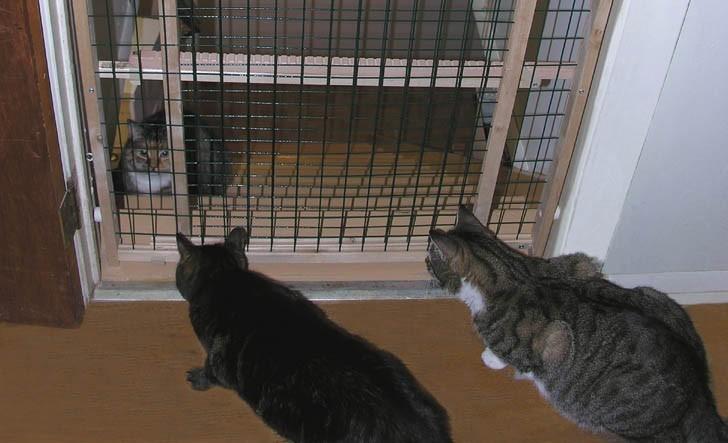
This barrier can then be rotated to fit in other doorways to enable the resident cat to encounter the newcomer in other areas. Allow each cat to approach or hide as they choose.
To increase the duration of the visual contact you can give each cat a fuss but you need to ensure that the cats are relaxed.
If at any point either cat looks anxious, for example, tensing or flattening ears, then they need to be separated and the process repeated again at a later time, possibly with the cats at a greater distance from each other.
Gradually increase the length of time the two cats are in visual contact until they no longer need to be separated.
Continuing to swap scent all the way through this programme will help the cats identify each other as familiar although they may never be accepted as members of the same social group.
Do not progress to a face to face introduction until the cats either ignore each other or show positive feline social behaviour – such as attempting to groom each other or rub heads on each other through the divider.
When it is time to introduce your cats face to face, it helps to:
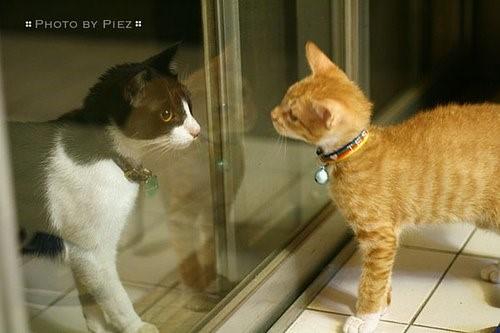
Ensure easy escape routes are available for both cats, as well as easy access to places higher up, such as furniture or shelves.
Start in a fairly large room where they can stay at a distance from each other.
Supervise the cats when they are together.
Work at a pace that the cats are comfortable with and go back a step if necessary.
Only introduce for short periods of time to help form positive associations with each other, before returning the cats to separate rooms.
Don’t chase or shout at them as this will only lead to them associating each other with bad things.
As the cats become more comfortable in each other’s company, try giving them titbits to encourage them to come closer together.
Gradually start to fuss or play with the cats for a short time, so their attention is on you. If this is tolerated, gradually increase the time they spend together.
Choose somewhere where they can escape easily – placing an object such as a chair between the feeding bowls may help them feel less threatened.
Over time, you can move the bowls closer together but do not place them side by side.
Cats should not be encouraged to eat meals next to one another as they prefer to eat separately to other cats – even those cats in the same social group.

It can take months for cats to tolerate each other, so don’t give up if there is some hissing and spitting initially, just go back a step.
They are unlikely to fight, but have a blanket ready just in case, so you can separate them. Take care to avoid being bitten or scratched as the cats may be quite stressed and anxious.
Cats can feel vulnerable when they are eating, so place food and water bowls slightly away from the wall, so the cat has space to sit with its back to the wall and is able to survey the room while eating or drinking.
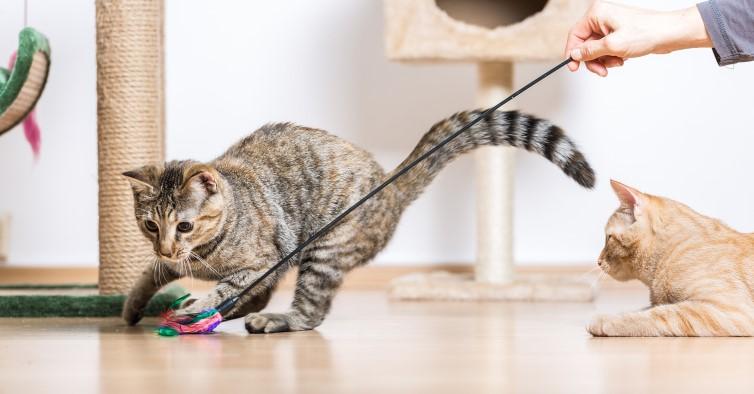
As well as reducing potential conflict between cats, it is important to observe the way the cats interact with one another. Cat to cat interactions and general relationships may fall in to the following categories:
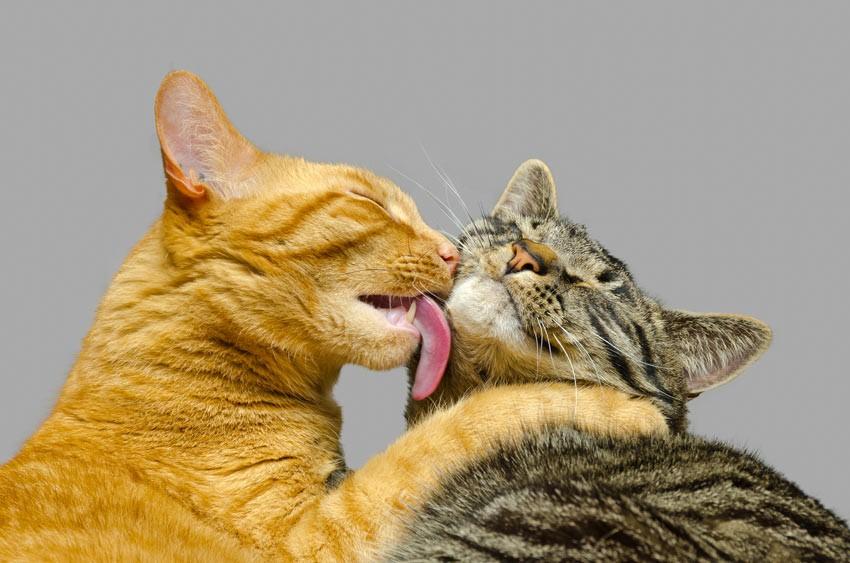
Affiliative
Tail up when approaching each other, touching noses, grooming and rubbing each other, play (initiated by both cats, not just the same cat), sleeping or resting in contact with each other, tail wrapping.
Resource blocking, physical attacks, displacing, staring, growling, hissing.
Not all cats will become the best of friends after following this programme but they will hopefully learn to accept each other and not feel threatened or stressed in each other’s presence.
By taking the simple steps outlined in this leaflet, you can often dramatically improve the quality of life of the cats living in your household.
If you have problems please seek help sooner rather than later, as it may be easier to resolve a recently developed problem, than one which has occurred for some time.
Avoidance, time sharing of areas/ resources, dividing the house into individual territories, ignoring each other or very few interactions, not sleeping or resting together.
If cats have been introduced too quickly, you may need to give them separate rooms and start the integration procedure from scratch.
Speak with your vet for further advice who may recommend referral to a suitably qualified cat behaviourist.
As previously mentioned, when a cat is secure you will see her brush up against furniture, rubbing her face on it. This is a cat marking it’s territory as safe and secure. The absence of these familiar marks is believed to lead to an increase in anxiety.
Ceva laboratories have managed to mimic this natural marking pheromone and put it into a product called Feliway.
Feliway helps cats naturally cope with stressful situations and stops unwanted cat behaviour, providing a contented household for you and your cats.
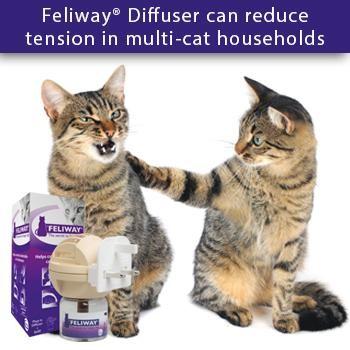
Felifriend is a complement to Feliway. While Feliway provides an effective solution to reassuring cats in unfamiliar environments, Felifriend assists the development of an atmosphere of confidence between cats in the same house hold. These man made pheromones can help your cats adjust to each other.

